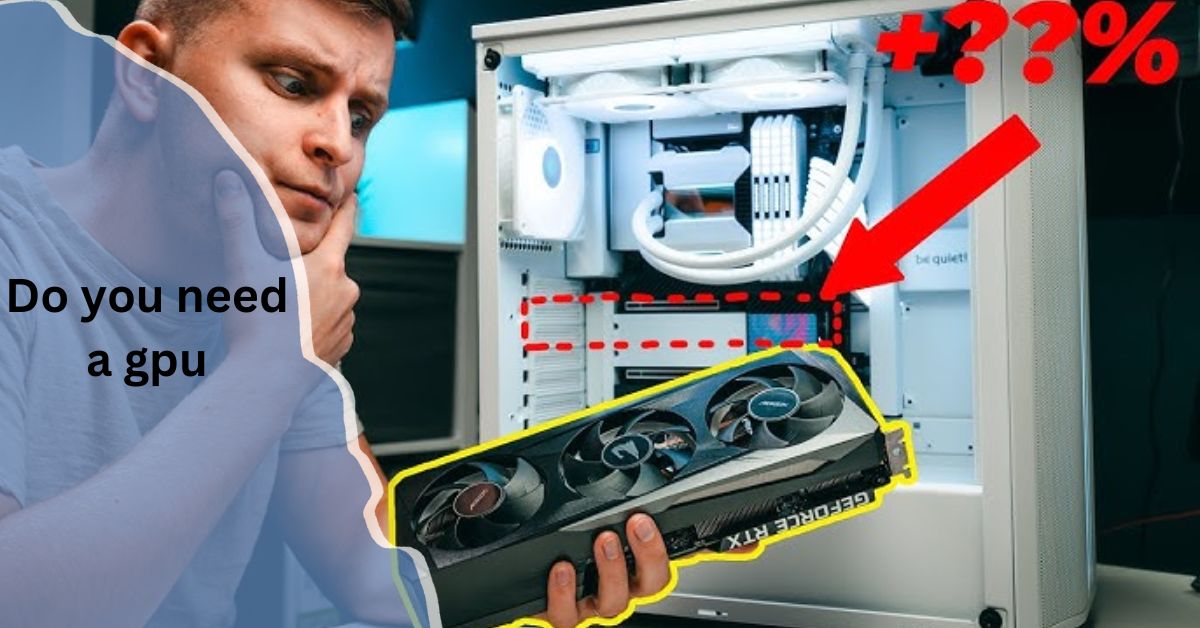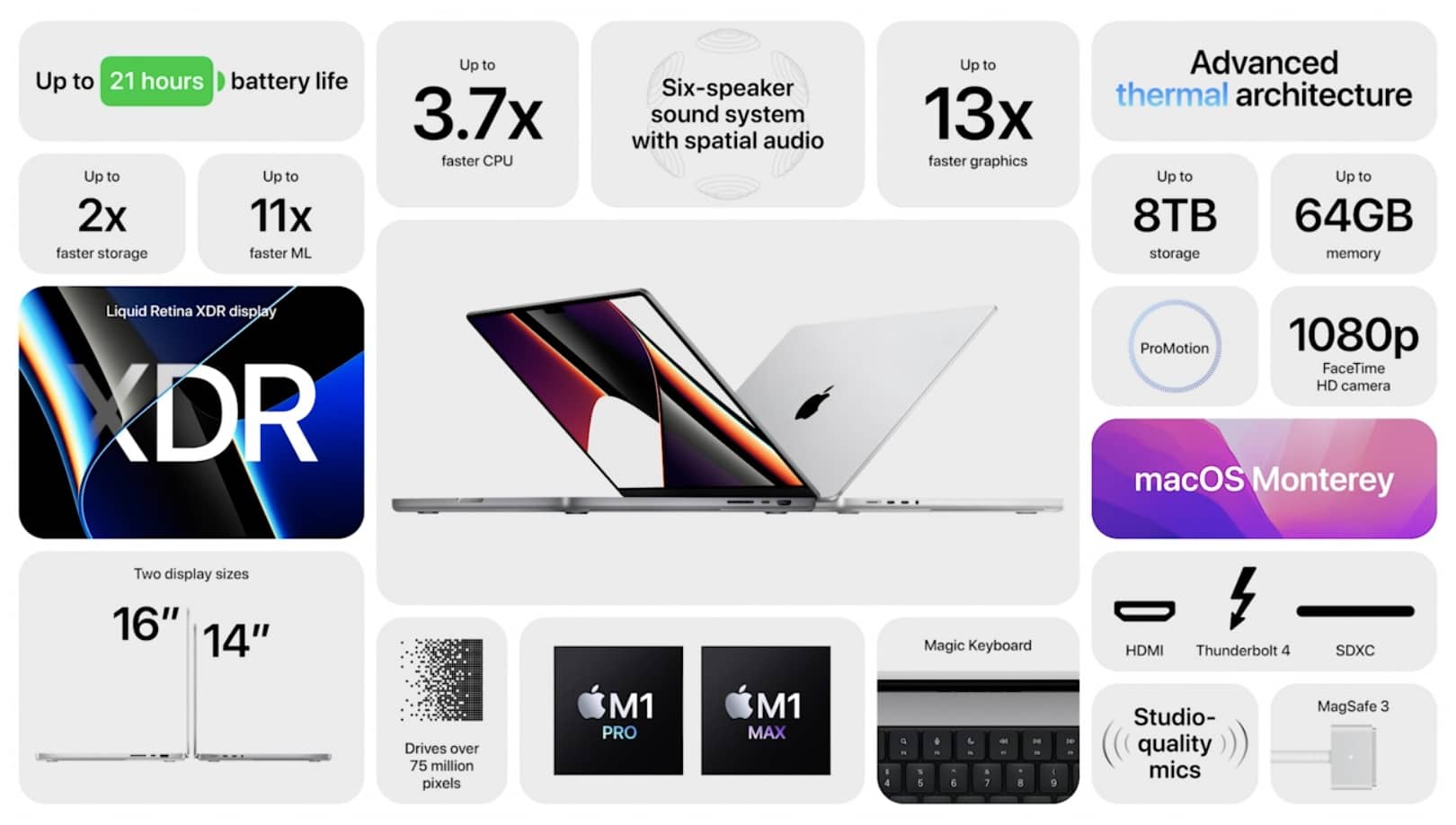In today’s tech-driven world, one question that often arises when building or upgrading a computer is: Do you need a GPU? Whether you’re a gamer, content creator, or casual user, understanding the role of a GPU (Graphics Processing Unit) is crucial.
You only need a GPU if you’re doing tasks like gaming, video editing, or 3D rendering that require extra graphics power. For basic tasks like browsing or office work, an integrated GPU on your CPU is usually enough.
In this guide, we’ll explore everything you need to know about GPUs and whether you really need one for your specific use case.
What Is a GPU?

A GPU, or Graphics Processing Unit, is a specialized processor designed to handle tasks related to rendering images, videos, and animations. While a CPU (Central Processing Unit) manages general tasks and processes, a GPU is specifically optimized for graphical computations, making it essential for gaming, video editing, and complex 3D rendering.
How Does a GPU Work?
A GPU functions by processing multiple data streams in parallel, which makes it highly efficient for tasks like rendering 3D graphics or decoding high-definition videos. It handles calculations required to display images on your screen quickly and effectively, ensuring smooth visual performance.
Key Components of a GPU:
- Cores: Thousands of smaller processing units handle multiple tasks simultaneously.
- Memory: VRAM (Video RAM) stores graphics data, textures, and more for fast access.
- Clock Speed: Determines how fast the GPU can process data.
Do You Always Need a GPU?
The short answer is not always, but it depends on your needs. Here are some common scenarios:
1. Casual Users (Web Browsing, Emails, Streaming)
If you’re using your computer for basic tasks like browsing the web, sending emails, or streaming videos, you don’t need a dedicated GPU. Modern CPUs with integrated graphics (like Intel’s UHD Graphics or AMD’s Vega graphics) are sufficient for these tasks.
2. Gamers

For gamers, a dedicated GPU is essential. Games, especially AAA titles, require a high level of graphical processing to display realistic environments, high frame rates, and advanced textures. Without a dedicated GPU, your gaming experience could be slow, laggy, or outright unplayable.
3. Content Creators (Video Editing, 3D Modeling, Animation)
If you’re into video editing, 3D modeling, or animation, a dedicated GPU can significantly improve your workflow. Software like Adobe Premiere Pro, Blender, and After Effects rely on GPU acceleration for rendering, making a powerful GPU critical for smooth performance.
4. Machine Learning and AI Development
In machine learning and AI development, GPUs excel due to their parallel processing capabilities. Training AI models involves large datasets and complex computations, which GPUs handle much more efficiently than CPUs.
5. Business Users (Office Work, Data Processing)
For standard office work, a GPU isn’t typically necessary. However, if you’re working with large datasets, graphical presentations, or simulations, a GPU could enhance the performance of certain software.
Integrated vs. Dedicated GPUs: Which Should You Choose?
There are two primary types of GPUs: integrated and dedicated.
Integrated GPUs
An integrated GPU is built into the CPU, sharing system memory for graphics tasks. While they are less powerful than dedicated GPUs, they are energy-efficient and sufficient for basic tasks like web browsing, office work, and light gaming.
Dedicated GPUs
A dedicated GPU is a separate graphics card installed in the computer. It has its own memory (VRAM) and is designed to handle heavy graphical loads, making it ideal for gaming, video editing, and 3D rendering.
Advantages of Having a Dedicated GPU
Investing in a dedicated GPU offers several advantages:
- Better Gaming Performance: A dedicated GPU ensures smooth gameplay, high frame rates, and realistic graphics.
- Faster Rendering Times: For content creators, a GPU significantly speeds up video rendering and 3D modeling processes.
- AI and Machine Learning Efficiency: GPUs handle the massive datasets required in AI development more efficiently than CPUs.
- Multi-Display Setups: A dedicated GPU supports multiple high-resolution displays, perfect for professional and gaming environments.
How to Choose the Right GPU?

If you determine that you need a dedicated GPU, the next step is choosing the right one. Here’s what to consider:
1. Performance Needs
Your use case will determine how powerful a GPU you need. For gaming, you’ll want something in the mid to high range, like an NVIDIA GTX 1660 or an RTX 3060. For content creators, an NVIDIA Quadro or AMD Radeon Pro might be more appropriate.
2. Budget
GPUs can vary significantly in price. A high-end gaming or professional GPU can cost over $1,000, while budget-friendly options for casual gaming or light editing can be found in the $200-$300 range.
3. Power Supply and Cooling
More powerful GPUs require greater power and cooling. Make sure your system has an adequate power supply and ventilation to support your chosen GPU.
4. Compatibility
Check if the GPU is compatible with your motherboard and if your case has enough space for the card. Also, ensure your power supply has the appropriate connectors.
When a GPU Isn’t Necessary:
In certain cases, having a dedicated GPU might be overkill. Here are situations where you might not need one:
- Basic Office Work: Tasks like using Microsoft Office, browsing, and managing spreadsheets don’t require advanced graphics.
- Media Consumption: Streaming HD or 4K content can be handled by modern integrated graphics.
- Light Gaming: Older or less graphically demanding games can run on integrated graphics without the need for a dedicated GPU.
The Role of GPUs in Modern Gaming Consoles:

While much of this article focuses on PC users, GPUs are also a key component of modern gaming consoles like the PlayStation 5 and Xbox Series X. These consoles feature custom-built GPUs that offer high-end gaming performance at a relatively lower price than equivalent PC hardware.
Future Trends in GPU Technology:
The graphics processing world is always evolving. Here are some upcoming trends that might affect your decision:
- Ray Tracing: Ray tracing technology, found in newer GPUs like NVIDIA’s RTX series, delivers more realistic lighting and reflections in games.
- AI-Powered GPUs: NVIDIA and AMD are increasingly incorporating AI capabilities into their GPUs to optimize performance in gaming and professional applications.
- Cloud Gaming: As cloud gaming platforms like Google Stadia and NVIDIA GeForce Now rise in popularity, the need for powerful home GPUs may decline, but we are not there yet for mass-market adoption.
FAQ’s:
1. What is the difference between a CPU and a GPU?
A CPU is designed for general-purpose computing tasks, while a GPU is specialized for rendering graphics and handling parallel tasks more efficiently.
2. Can integrated graphics handle gaming?
Yes, integrated graphics can handle light or older games, but for more demanding games, a dedicated GPU is necessary for smooth performance.
3. Is it possible to upgrade from integrated graphics to a dedicated GPU?
Yes, as long as your motherboard supports the GPU and your system has adequate power and space, you can upgrade from integrated graphics to a dedicated GPU.
4. How do I know if my system needs a dedicated GPU?
If you use your computer for gaming, video editing, 3D rendering, or machine learning, you’ll benefit from a dedicated GPU. For basic tasks, integrated graphics are usually sufficient.
5. What are some affordable GPU options?
For budget-conscious users, the NVIDIA GTX 1650 or AMD Radeon RX 550 are affordable options that provide solid performance for casual gaming and light editing tasks.
6. Does a GPU improve the speed of my computer?
A GPU improves the performance of tasks related to graphics and parallel computing but does not directly affect tasks handled by the CPU, like browsing or running basic applications.
7. What is GPU VRAM, and why is it important?
VRAM is the memory used by the GPU to store textures, models, and other graphical data. More VRAM allows the GPU to handle higher-resolution textures and larger datasets, improving overall performance.
8. Can I use multiple GPUs in one system?
Yes, with technologies like NVIDIA SLI or AMD CrossFire, you can use multiple GPUs for increased performance, although this setup is often more complex and expensive.
9. How long does a GPU typically last?
A well-maintained GPU can last several years, though it may become outdated as new graphics technology is developed. Proper cooling and power management can extend its lifespan.
10. Is a GPU necessary for 4K video streaming?
Integrated graphics on modern CPUs can handle 4K video streaming, but a dedicated GPU can provide a smoother experience, especially when running multiple 4K displays or tasks.
Closing Remarks:
Ultimately, whether you need a GPU depends on how you use your computer. For casual tasks, an integrated GPU should suffice. However, gamers, content creators, and professionals handling heavy workloads will benefit greatly from a dedicated GPU. Evaluate your current needs and budget before making a decision, and remember that technology is always advancing, so stay informed to make the best choice for your setup.








